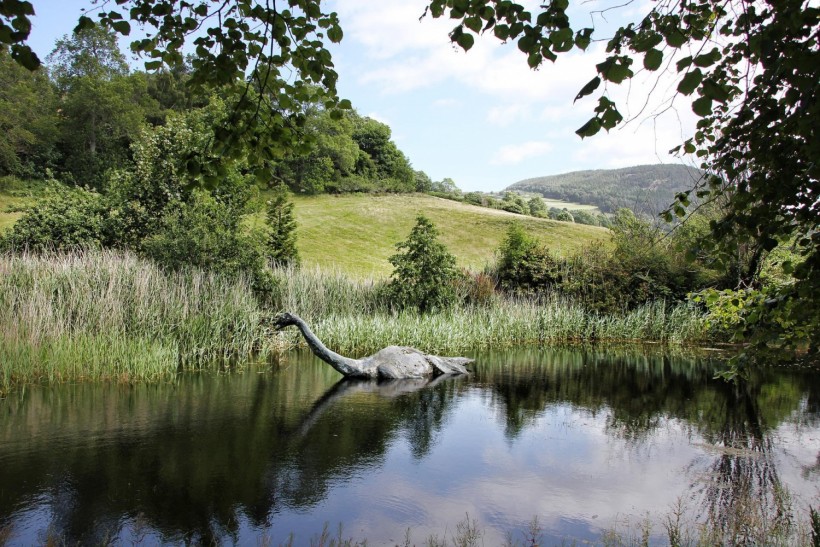Plesiosaurs, which are typically thought of as ocean dwellers, were able to survive in freshwater, according to a recent paper published in the journal Cretaceous Research. For Nessie believers, that has proven to be exciting news because one of the most popular theories for the fabled Scottish sea monster is that she is actually a plesiosaur.
Is the Loch Ness Monster a Plesiosaur?
Many are not convinced about the theory of the mythical Scottish beast - the Loch Ness monster - being a plesiosaur. According to them, if Nessie is a plesiosaur, she wouldn't survive in the Loch Ness because plesiosaurs are saltwater creatures.
However, plesiosaur fossils have been discovered in a freshwater system in Morocco making the theory about the Loch Ness monster "plausible." Apparently, plesiosaurs, the beasts with long necks and small heads could survive in freshwater like in the Loch Ness, Ladbible reported.
However, when asked via CBC Radio if his research supports that theory, co-author Nick Longrich responded, "Not really." The most obvious explanation is that plesiosaurs went extinct 66 million years ago when the Scottish Highlands' Loch Ness was covered entirely in ice and glaciers.
According to Britannica, plesiosaur measures from 4.5 to 15 meters, depending on the species. The size cannot be supported by Loch Ness' surface area of just 56 square kilometers. He added that you could never be certain of anything. But in all actuality, the existence of a plesiosaur-like Loch Ness monster is improbable, if not impossible.
Plesiosaur Discovery in Morocco
Longrich's investigation was initiated outside of a lab, in a Moroccan shop, to be exact, that deals in items like rocks, polished limestone, and ammonite fossils. He noticed one of the bones in the back of the small room and realized it was a plesiosaur.
The bone came from a young leptocleididae plesiosaur, a smaller species, and measured 1.5 meters in length. It was found in a 100 million-year-old freshwater river system in what is now known as the Sahara desert.
Out of curiosity, he purchased it and brought it back to Britain for additional study. Then, he and some of his British colleagues from the University of Portsmouth and Université Hassan II in Morocco - searched for other leptocleididae fossils that originated in the country's freshwater systems. They found several, including teeth, vertebrae, and a humerus.
According to Longrich, they are actually fairly typical in freshwater. Plesiosaurs that lived in freshwater have long been known but they don't know why.
"We don't really know why the plesiosaurs are in freshwater," Longrich said (via Ladbible). "It's a bit controversial, but who's to say that because we palaeontologists have always called them 'marine reptiles', they had to live in the sea? Lots of marine lineages invaded freshwater."
Co-author Dave Martill, professor of palaeobiology at the University of Bath, added that what amazed him was the realization that the ancient Moroccan river had been home to many carnivores.
"This was no place to go for a swim," he exclaimed.

Loch Ness Nessie Monster
ALSO READ: Bizarre Loch Ness Monster Theory Suggests It Could Just Be a Whale's 'Snake-Like Penis'
Dinosaur Specialist Comment on the New Discovery of Plesiosaur
Don Henderson, a specialist in dinosaurs and marine reptiles from the Royal Tyrrell Museum in Drumheller, did not find the new discovery surprising. He said that since 1902, they have been aware of freshwater plesiosaurs from Western Canada.
Henderson pointed out that plesiosaur fossils have been found in the Red Deer River valley in Alberta, which is now Dinosaur Provincial Park, for more than a century. He claims that freshwater areas of South Australia, Britain, and Australia have also seen the discovery of extinct marine reptiles' remains. The freshwater fossils typically belong to juveniles, indicating that the creatures may have hidden from ocean predators as young animals before venturing out to sea as adults. It is simply a safer atmosphere for them, according to Henderson. However, they would have had to avoid crocodiles.
Longrich admits that these findings are not entirely original. However, the quantity of fossils the team was able to collect suggests that leptocleididae were not only capable of surviving in freshwater but may have even done so permanently.
RELATED ARTICLE: Mysterious Loch Ness Monster Might Have Been a Long-Necked Freshwater Dinosaur Based on Major Fossil Discovery
Check out more news and information on Environment in Science Times.














